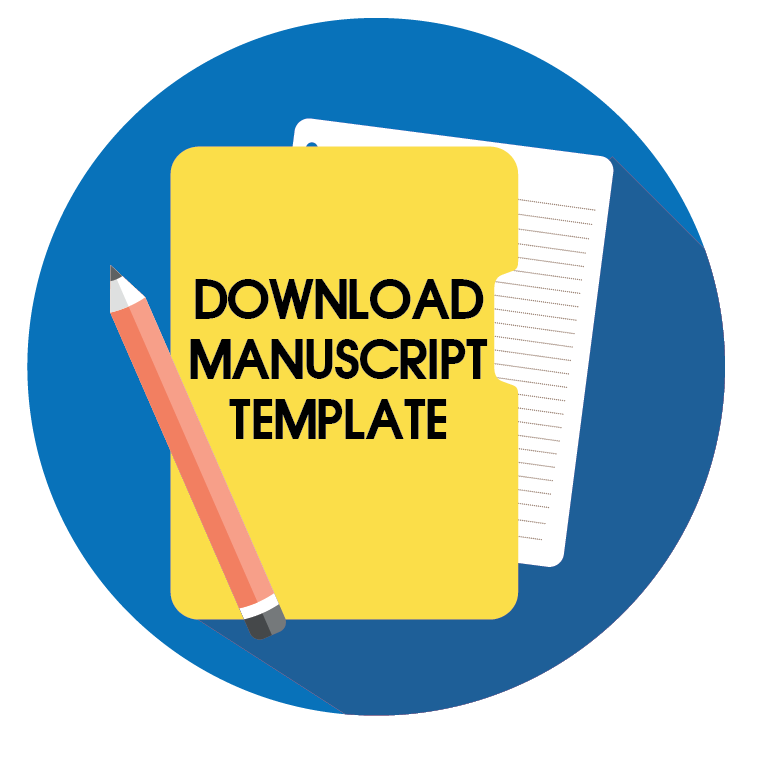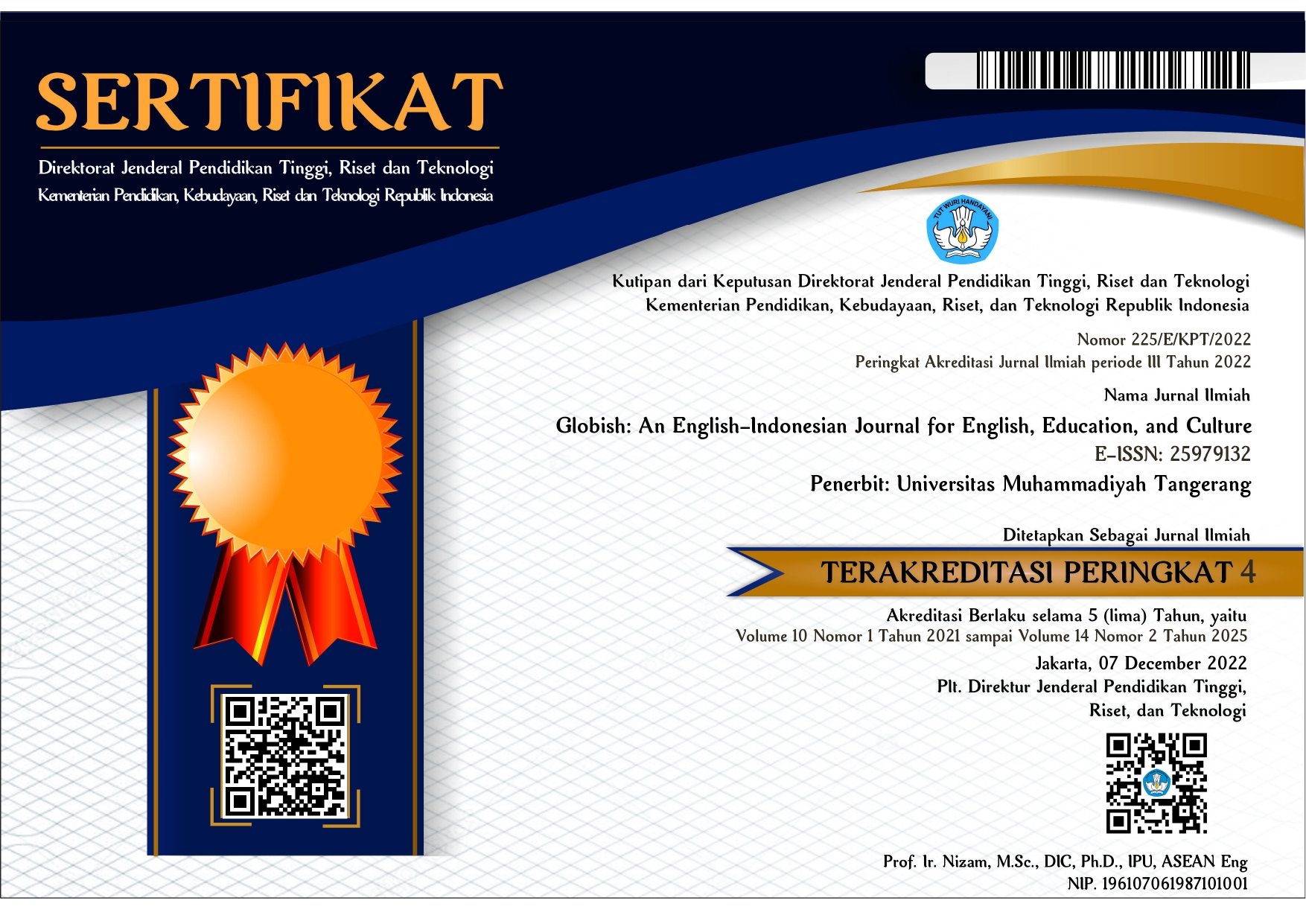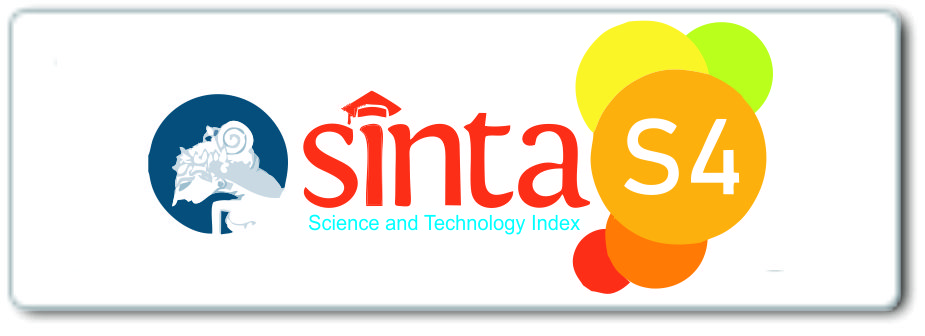THE EFFECT STORYTELLING TO 2ND SEMESTER STUDENTS OF UNIVERSITY MUHAMMADIYAH TANGERANG
Abstract
ABSTRACT
Storytelling is an activity or activity to tell a story organize and attractively. This research is aimed to discover the differences between students who given storytelling and the students who given conventional technique in improving students’ speaking skill. The research conducted to 2nd semester student from universitas Muhammadiyah Tangerang with the total sample is 56 students. The methodology of the research is quantitative approach with quasi experimental method. The researcher did 2 tests, consist of pre-test and post-test. This research was conducted of two classes, control class and experiment class. The result of the research shows that students who taught by using storytelling have higher score than the students who taught by using conventional technique. The students can explore their ideas well and more interested in learning speaking by using storytelling. As suggestion, the researcher hopes that the teachers must be able to choose appropriate technique and media in teaching English.
Keywords
Full Text:
PDFReferences
Andita, putri alinda, Arjulayana, & Ramadhaniah. (2019). the correlation in speaking English ax. Globish (An English-Indonesian Journal for English, Education and Culture, 7(2).
Angay-Crowder, T., Choi, J., & Yi, Y. (2013). Putting Multiliteracies Into Practice: Digital Storytelling for Multilingual Adolescents in a Summer Program. TESL Canada Journal, 30(2), 36. https://doi.org/10.18806/tesl.v30i2.1140
Anggini, S. D., & Arjulayana, A.-. (2021). Analysis Student’s Speaking Performance as an Academic Speaker’s Practice. Globish: An English-Indonesian Journal for English, Education, and Culture, 10(1). https://doi.org/10.31000/globish.v10i1.3943
Arjulayana, Rafli, Z., & Dewanti, R. (2021). Speaking Class Based Collaborative Virtual Learning as Multiliteracies Concept. 4.
Banerjee, D. S. (2014). Learn and Unlearn: Drama as an Effective Tool in Teaching English Language and Communication. International Journal of English Language and Translation Studies, 2(1), 79–91.
Bossi, E. (2015). Language, Literacy, and Learning in STEM Education. System, 50, 76–77. https://doi.org/10.1016/j.system.2015.01.009
Cooke, S., Smith, L. E., Nelson, C. L., Yoshikawa, H., British Council, Harding, L., & Mcnamara, T. (2017). Language assessment The challenge of ELF. The Routledge Handbook of English As a Lingua Franca, 17(4), 570–582. https://www.ielts.org/-/media/pdfs/speaking-band-descriptors.ashx?la=en
Eragamreddy, N. (2015). Motivating Learners to Learn : Libyan EFL Teachers ’ Strategies and a Perspective. International Journal of English Language & Translation Studies, 3(02), 42–54.
Finch, A. (2002). Using poems to teach English . English Language Teaching. English, 15(2), 29–45. http://www.finchpark.com/arts/Poems.pdf
Harmer, J. (n.d.). “Teaching and Learning Grammar” - Harmer Jeremy.pdf. Longman.
Hartmann, R., Seaton, T., Sharpley, R., & White, L. (2018). The Palgrave Handbook.
Hay, J., Podlubny, R., Drager, K., & McAuliffe, M. (2017). Car-talk: Location-specific speech production and perception. Journal of Phonetics, 65, 94–109. https://doi.org/10.1016/j.wocn.2017.06.005
Hinkel, E. (2006). Current Perspectives on Teaching the Four Skills. TESOL Quarterly, 40(1), 109. https://doi.org/10.2307/40264513
Huang, H. T. D. (2016). Exploring strategy use in L2 speaking assessment. System, 63, 13–27. https://doi.org/10.1016/j.system.2016.08.009
Linardopoulos, N. (2010). Teaching and learning public speaking online. MERLOT Journal of Online Learning and Teaching, 6(1), 198–209. http://jolt.merlot.org/vol6no1/linardopoulos_0310.pdf
Newfield, D., & D’abdon, R. (2015). Reconceptualising Poetry as a Multimodal Genre. TESOL Quarterly, 49(3), 510–532. https://doi.org/10.1002/tesq.239
Nurjaman, I., Rachmi, T., & -, A. (2020). Persepsi Orang Tua Terhadap Pemerolehan Bahasa Inggris Anak Usia Dini. Early Childhood : Jurnal Pendidikan, 3(2), 82–90. https://doi.org/10.35568/earlychildhood.v3i2.528
Parratt, A. (2000). Case study research in educational settings. In Teacher Development (Vol. 4, Issue 3). https://doi.org/10.1080/13664530000200293
Richards, J. C., & Rodgers, T. S. (2003). Approaches and Methods in Language Teaching. In Approaches and Methods in Language Teaching (Second edi). Cambridge Press University. https://doi.org/10.1017/cbo9780511667305
Shih, R. C. (2010). Blended learning using video-based blogs: Public speaking for English as a second language students. Australasian Journal of Educational Technology, 26(6), 883–897. https://doi.org/10.14742/ajet.1048
Tillit, B., & Bruder, M. N. (1999). Speaking Naturally (p. 128). Cambridge Press. https://makalahnyafikri.files.wordpress.com/2012/09/speaking_naturally.pdf
DOI: http://dx.doi.org/10.31000/globish.v12i2.8716
Article Metrics
Abstract - 1289 PDF - 563Refbacks
- There are currently no refbacks.
Globish
Program Studi Pendidikan Bahasa Inggris
Fakultas Keguruan dan Ilmu Pendidikan
Universitas Muhammadiyah Tangerang
Jl. Perintis Kemerdekaan I/33, Cikokol
Kota Tangerang, Indonesia
e-mail: globish_journal@umt.ac.id
Globish (p-ISSN: 2301-9913 | e-ISSN: 2301-9913) is licensed under a Creative Commons Attribution-ShareAlike 4.0 International License.









